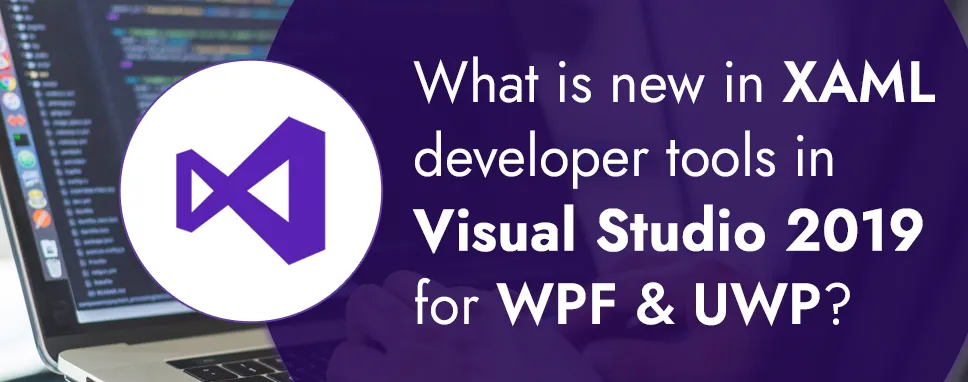17 Power BI Myths and Misconceptions Busted | Uncover the Truth
Did you know that 70% of CTOs (Chief Technology Officers) hesitate to adopt Microsoft Power BI because of its myths and misconceptions that float around. What they fail to see is...
Kapil Panchal - March 03, 2021
Listening is fun too.
Straighten your back and cherish with coffee - PLAY !

Since the beginning of Visual Studio 2019, the visual studio has introduced a lot of the latest options for XAML developers functioning for the WPF or UWP Custom desktop application development.
What is hot Reload?
XAML Hot Reload helps you produce your WPF or UWP application interface (UI) helps you to edit the XAML code where your application is running. Hot Reload is accessible on Visual Studio likewise as a mix of Visual Studio. This feature allows you to boot build and take a look at XAML code with the benefits of running the application's information context, authentication state, and different real-world completeness that area unit troublesome to simulate throughout design-time. XAML Hot Reload is especially helpful in such things.
The toolbar has been updated within the application to point that XAML Hot Reload isn't accessible and could be a link to the relevant documentation before this update customers had no means of knowing that XAML Hot Reload works while not 1st trying to use the feature, that was resulting in confusion.
The toolbar within the app is currently titled in keeping with Visual Studio designated theme colors.
We've updated the "Enable Selection" behavior within the app's toolbar feature to pick parts in an exceedingly running application. With this modification, the selector can stop choosing parts once you decide on your 1st part. This makes it compatible with similar tools like F12 browser tools and supported client feedback.
XAML Hot Reload (formerly known as "XAML Edit & Continue") currently supports a piece of writing informs bindings with an x: bind for public properties, element name, indexed property methods (archives), methods with hooked up properties and forged properties build. Different changes aren't supported. This augmentation is accessible to any application wherever the minimum and most versions target Windows 10 SDK version 1809 or higher.
XAML Hot Reload currently supports change WPF resource length for a period of time updates within the app. Previously this feature was solely accessible for Universal Windows Platform (UWP), however currently it's WPF. Supported .NET Framework, WPF, .NET Core, and UWP applications. Supported actions embody adding a brand-new resource section definition and adding, deleting, and change new/existing resource sections.
Live Visual Tree could be a feature accessible to each UWP and WPF developer after they run their application in the right mode and is a component of the live piece of writing tooling associated with the XAML hot reload. The previous feature would show a full live read tree of a connected running application while not filters the maximum amount as potential to look at the XAML you typewritten into your application. This can be designed for really clangourous expertise and supported client feedback we've value-added a brand-new default known as "Just My XAML" which can limit the controls written in your application to merely the tree. Despite this new default, it's potential to travel back to the previous behavior via the button within the Live Visual Tree or through a brand-new setting (previous options: Debugging> General> change simply My XAML).
The application's toolbar has been extended so it's fastened inside the running WPF / UWP application, sanctioning developers to unlock the applying UI by dragging it left or right into the applying. Note that the situation wherever the toolbar has been emotional isn't kept between sessions and can come to the default state once your application is restarted.
To help developers once information binding fails in their application, we have got a brand-new feature in development that brings a passionate XAML binding failures panel to Visual Studio. Whereas this feature can eventually work for all XAML developers (WPF, UWP, and Xamarin.forms), this new panel within the 1st preview can create it easier for purchasers make a WPF application to spot binding failures.
This feature implies that developers haven't got to use binding failures and output windows and new developers ought to create them additional detectable. This feature remains early in development and isn't enclosed in Visual Studio.
XAML Designer in WPF. Internet Core applications area unit currently usually accessible for all shoppers while not requiring a preview perform indicator. The XAML Designer for WPF .NET Core Applications differs slightly in some behaviors and functions from the WPF .NET Framework Designer, please note that this can be intentional. Given the variations, we tend to encourage customers to report any problems or limitations.
Based on client feedback we've re-evaluated the default XAML designer zoom behavior after you open a XAML window/page/control / etc. Previous expertise had kept the zoom level and position for every get in the Visual Studio sessions, inflicting confusion once customers were returning to the file once a jiffy. From this version, we'll solely store the zoom level and standing for the length of the active session, and once Visual Studio is restarted.
WPF near Visual Studio. Net Framework has a data binding dialog available to developers with the right click of XAML Designer and Asset Explorer, and this dialog was previously also available to UWP developers. In this version, we bring this experience to UWP developers and add support for WPF .NET Core apps. This feature is still in development and will continue to be improved in the future to restore the feature's similarity with the .NET Framework dialog capabilities.
In this release, we have provided a new preview called Suggested Actions that enables easy access to common properties when the controls under XAML Designer are selected. To use this feature, first enable it via Options> Preview Features> XAML Suggested Actions. Once enabled click on the supported control and use the light bulb to expand and interact with the notification actions UI. Supported controls in this release include: Border, Button, Canvas, Checkbox.
IntelliCode is an AI-supported intelligence for multiple languages ??that predicts a potential true API for developers to use instead of just a list of members' alphabets. IntelliCode supports languages like C#, C, XAML, and others.
Beginning in Visual Studio 2015, #Region Support is accessible for WPF and UWP XAML developers, and more latterly for Xamarin.forms. In this release, we have fixed the Intelligence Sense bug, with this fix.
Intelligence has been enhanced to support showing XAML snippets, this will work for both built-in snippets and any custom snippets that you add manually. Starting with this version, we have also included some excerpts from XAML: #region, column definition, line definition, setter, and tag.
It is now possible to easily split the XAML Designer and its built-in XAML editor into a window using the new XAML button next to the XAML text. Clicking the XAML Designer will reduce the XAML tab attached to it and open a new window for XAML editor view only. You can move the new window to a view or group of tabs within Visual Studio. Note that it is still possible to extend the original XAML view but all XAML views of the same file will be synchronized in real-time.
In this blog, we discussed the new version of Visual Studio and also grab information about the new feature. Hot reload is considered important in the new version introduced in visual studio 2019. We also saw in the blog that we can change the run time design is also a good new feature.

Did you know that 70% of CTOs (Chief Technology Officers) hesitate to adopt Microsoft Power BI because of its myths and misconceptions that float around. What they fail to see is...

Every CTO knows the struggle of managing complex reports. The inefficiency of scattered data, the constant juggling between reporting tools, the challenge of ensuring accurate KPIs...

The very first reason why you should implement Row Level Security is to foster trust, a crucial element for any business's success. Next, it reduces data clutter and helps you load...